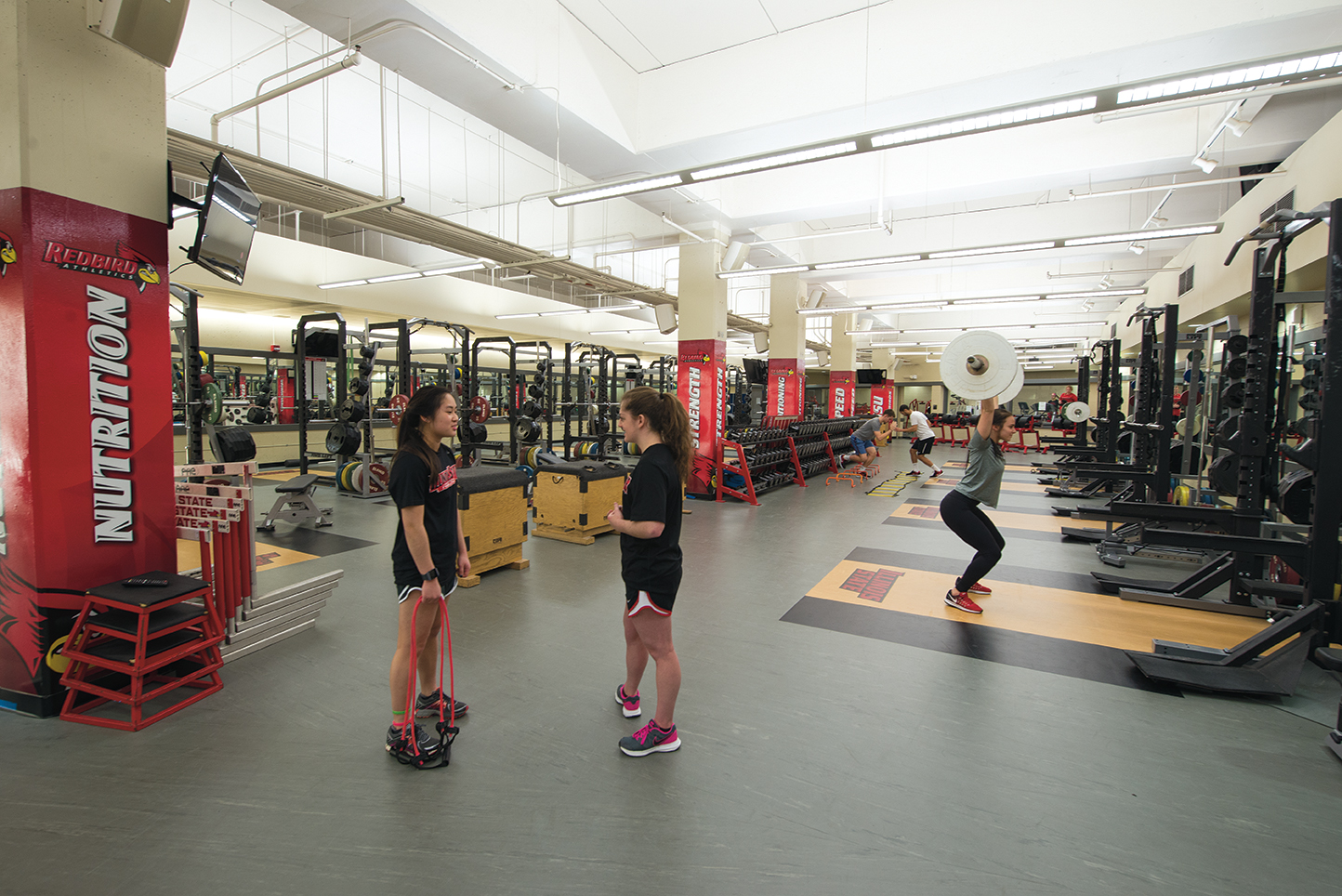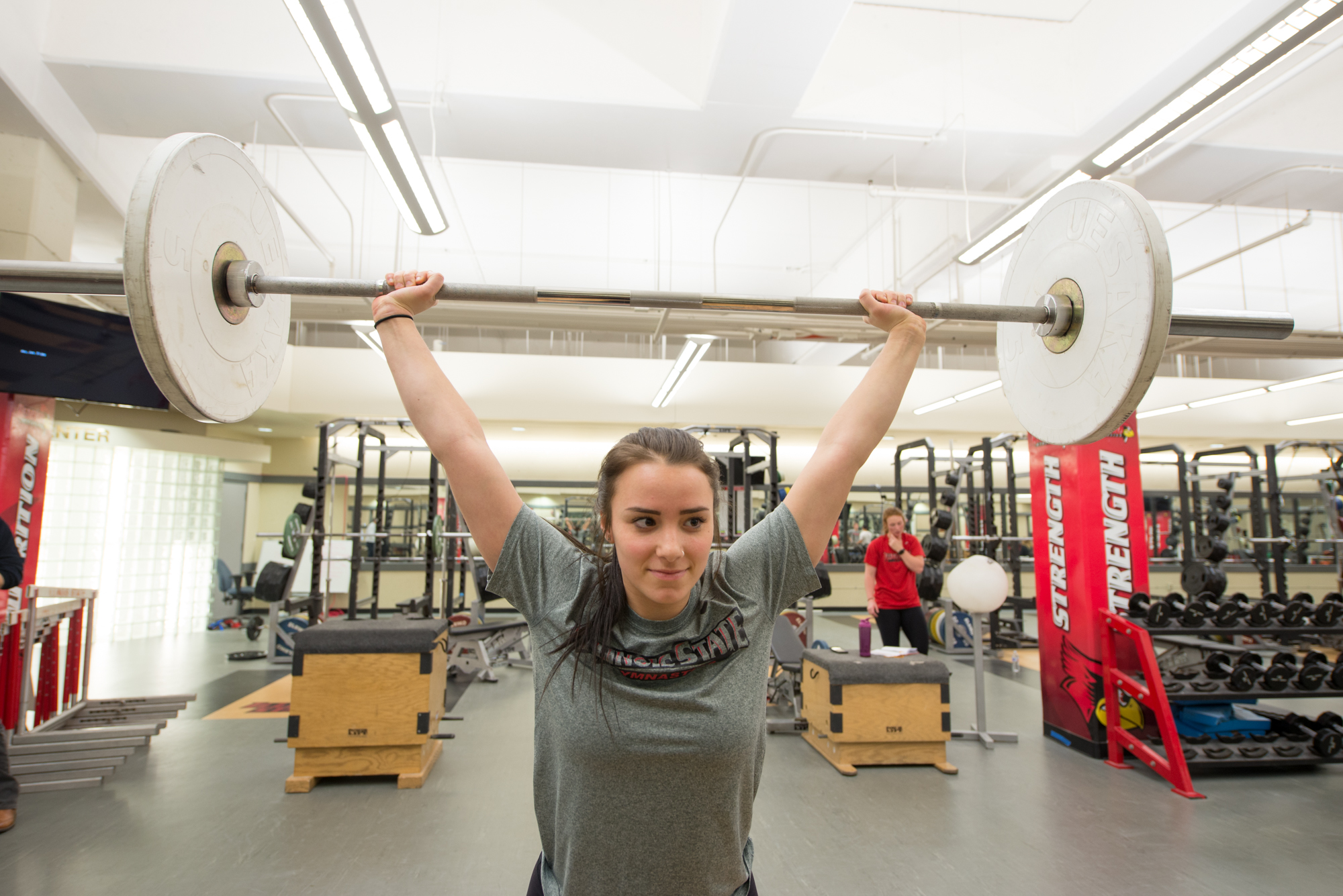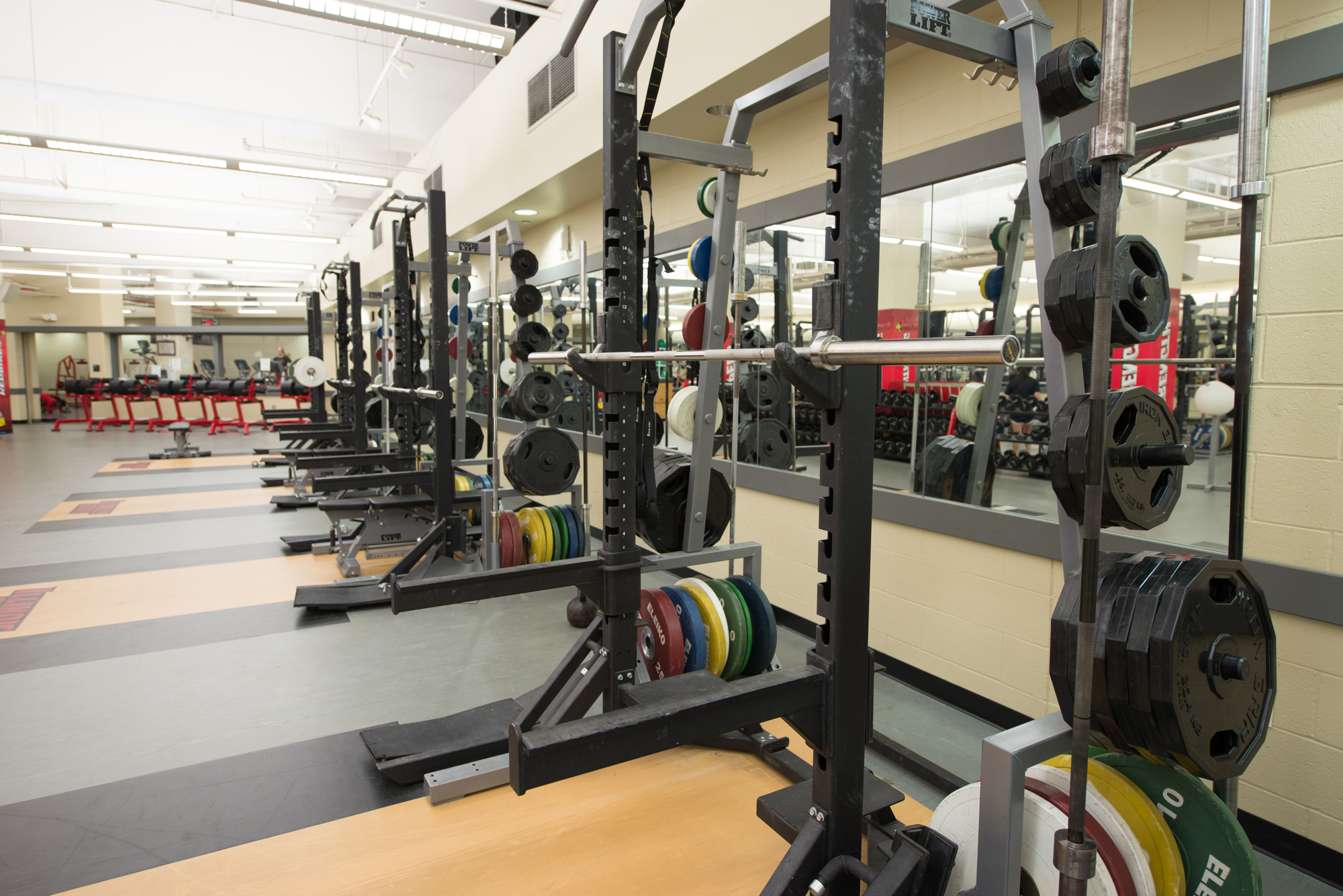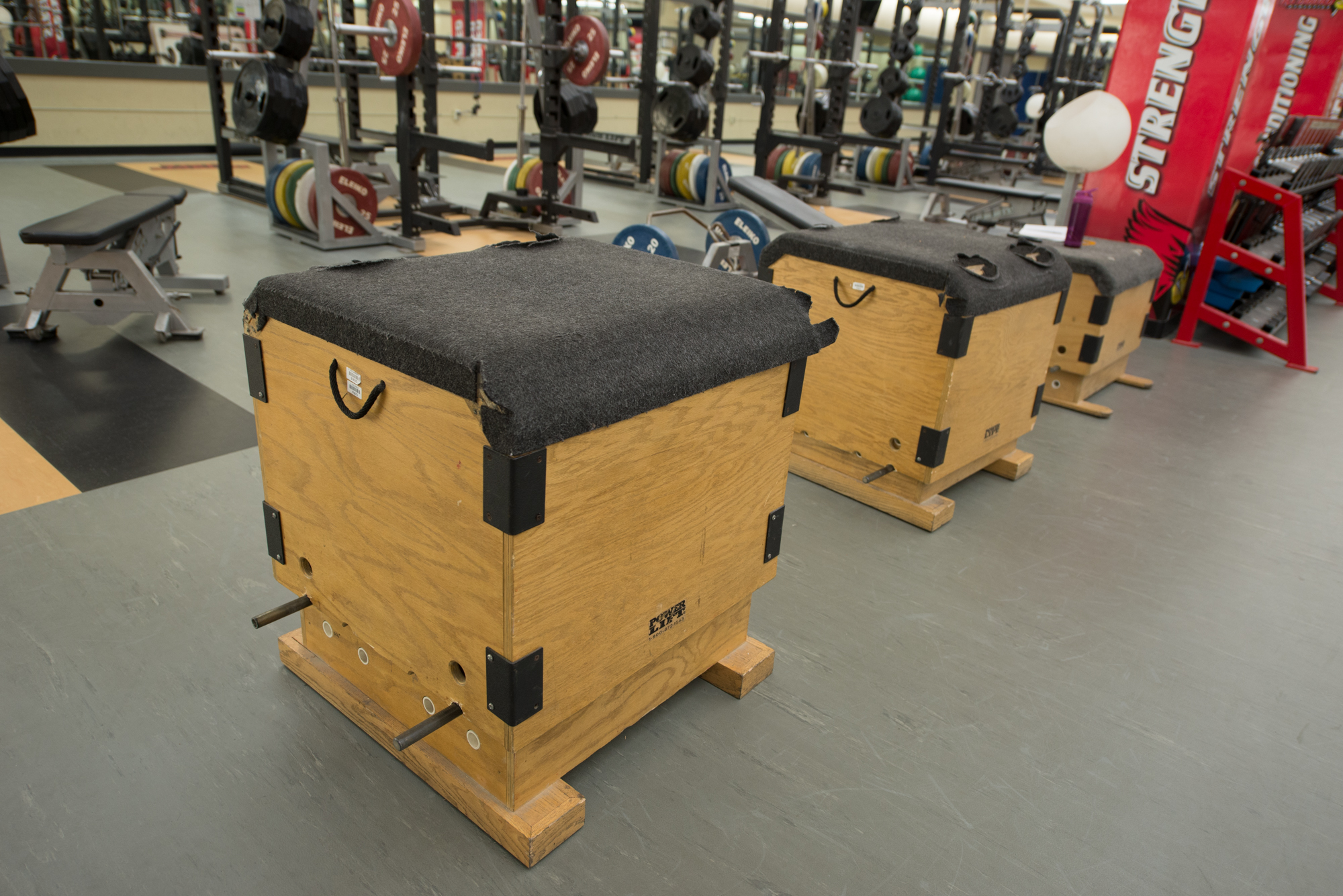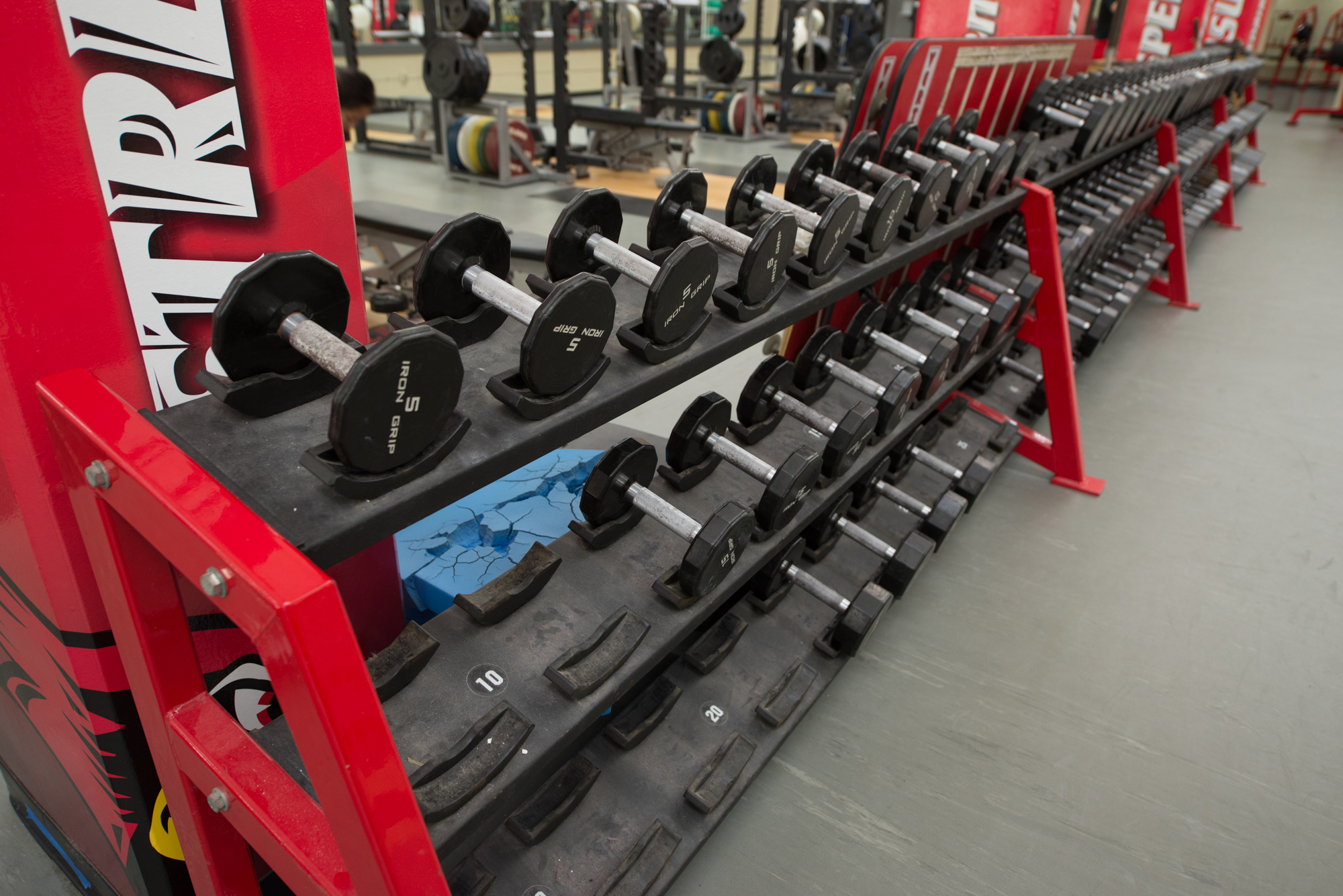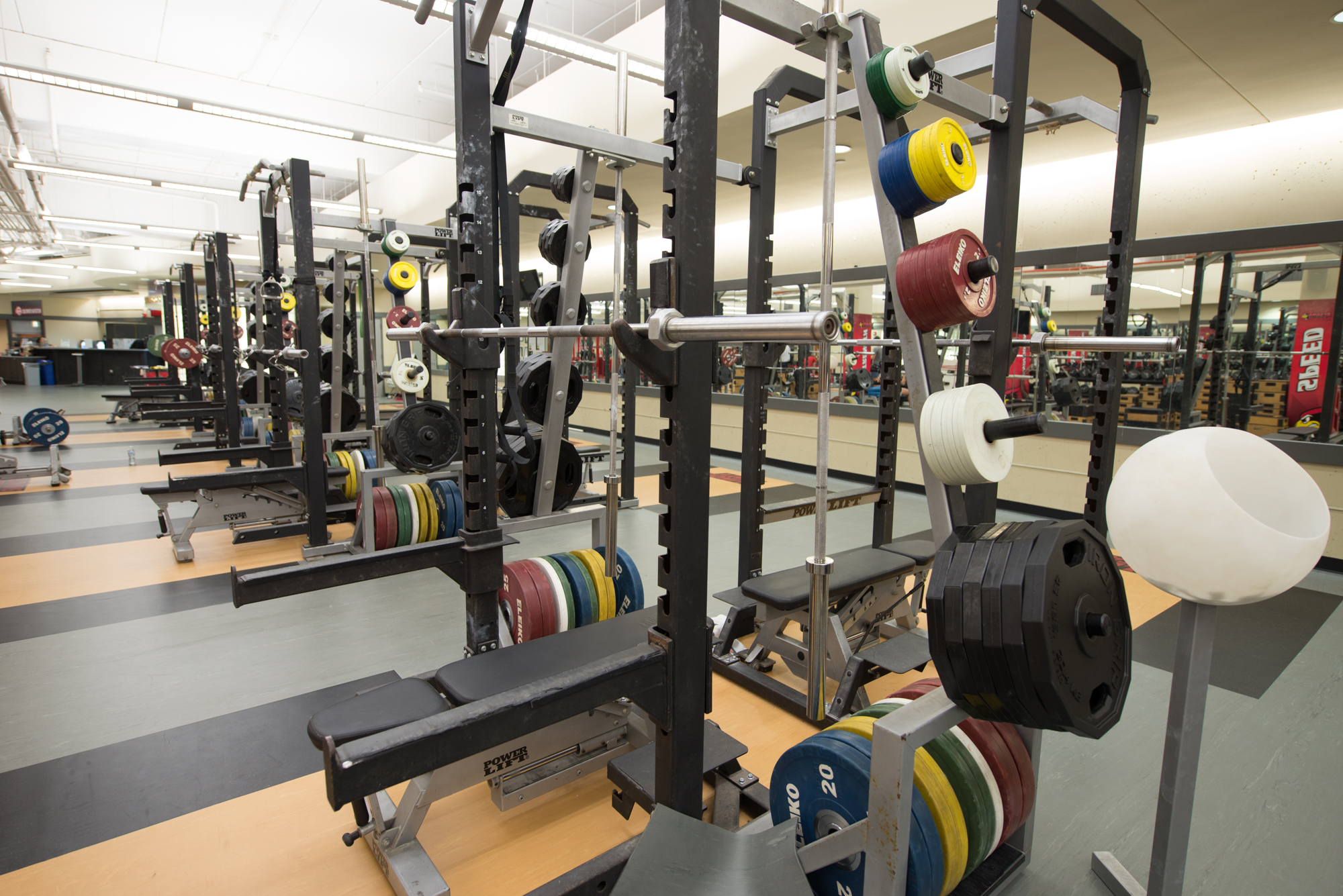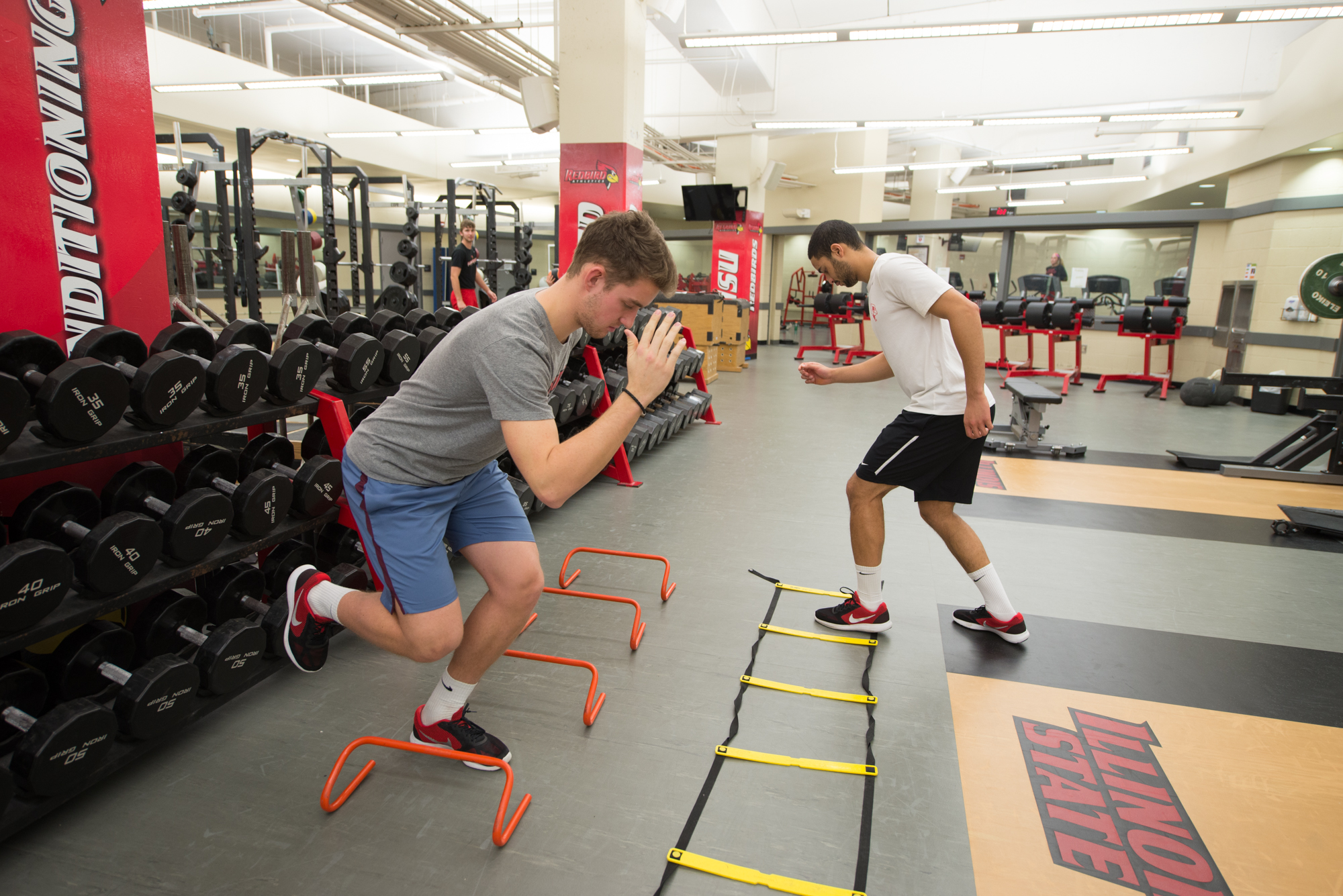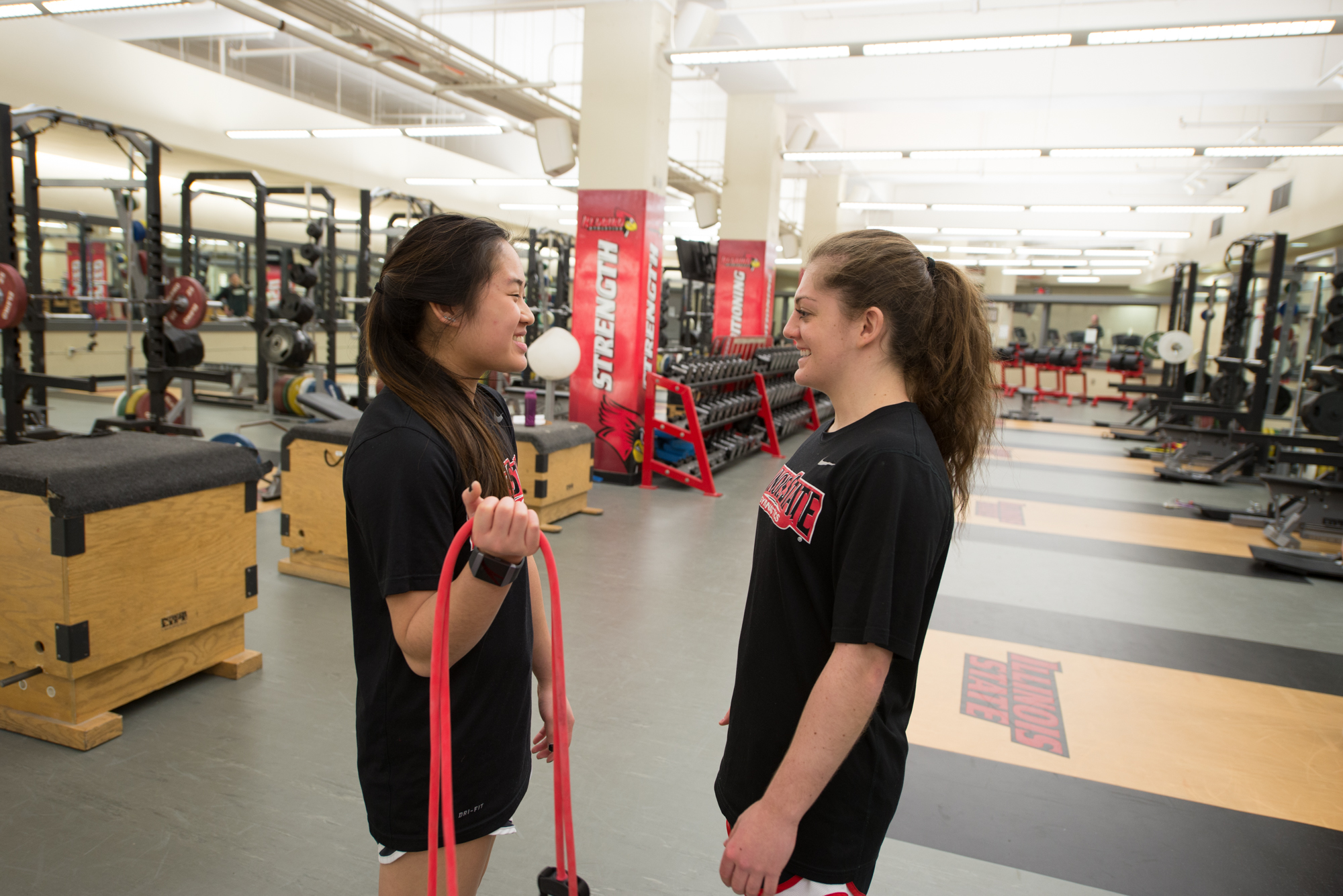On Redbird Arena’s lower level, tucked behind the stands just paces from the hardwood so familiar to basketball fans, sits the Owen Strength and Conditioning Center. This 9,200-square-foot space is the training center for 400-plus men and women who participate in the University’s 19 varsity sports. Redbird athletes come here for expert training tailored to their sport and for nutrition advice.
Named for Richard and Fran Owen, this state-of-the-art facility was dedicated in 2005. As the name implies, most of the facility is dedicated to strength and conditioning, but it’s also home to a cardio center and staff offices.
Appears InStrength and Conditioning Coach Jim Lathrop is the director of the center, which is open up to 80 hours per week, starting most days at 4:30 a.m. Its mission, Lathrop said, is to prevent injury, improve strength, and promote recovery.
1. Katie DiGiacomo
DiGiacomo is a freshman and a member of the gymnastics team. She is a native of Tampa. This DiGiacomo is lifting 66 pounds. That’s the weight of the barbar and bumper plates together. She is completing a lift called a jerk as she straightens her legs and lifts the bar above her head.
2. Redbird muscle
Power stations or half racks are a variation of the full racks that are on the opposite side of the room. Both areas are where some serious weight training goes on. Redbird athletes squat, clean, snatch, lunge, push, and bench their way to elite fitness using the power stations.
3. Jump start
These are plyometric boxes used for a variety of repetitive jump-training exercises, including depth jumps. Plyometric boxes, sometimes called plyo boxes, are designed to train the neuromuscular system to be more efficient. This type of training helps athletes who make explosive movements on the court or field.
4. Rack to the future
These multiple sets of red racks are called dumbbell racks. Dumbbells range up to 150 pounds and offer versatility in preparing athletes with bi-lateral or isolateral work. Lathrop said that instead of having to use a bar for training, he likes for athletes to have the option of doing one-arm or two-arm workouts as needed.
5. No power outage
Full racks. See half racks, except the full racks are bigger and have more weight capacity. This side of the room is where you’ll likely find members of the football team working out and lifting the roof off the place. During football season the center is open on Sundays so players can get in their post-game workout.
6. Manuel Bernhard and Cameron Petersen
Bernhard (left) is a freshman and a member of the tennis team. He has come to the flatlands of Illinois all the way from Switzerland, where mountains famously dominate much of the topography. He is doing the floor hurdles, which are designed to help athletes develop quicker feet and improve their agility and quickness.
Petersen is a freshman and a member of the tennis team. He is from South Africa where the sunny climate is suited for tennis, and snow and ice are rare sights. He is using the running ladder, comprised of plastic and nylon webbing. It’s designed to put athletes through quick-feet drills that will help improve their quickness and agility, Lathrop said. He described this piece of equipment as a modern version of jumping, one foot at a time, through rows of old tires that were commonplace on long-ago football fields. Having quick feet is important in just about every sport, particularly important in tennis, which is why a tennis player is using it in this photo.
7. Kennadi LeDoux and Alyssa Wiggle
LeDoux (left) is a freshman and a member of the gymnastics team. She hails from Buford, Georgia. Wiggle is a sophomore and a member of the gymnastics team. Her hometown is Dearborn, Michigan.
John Moody can be reached at jemoody2@IllinoisState.edu.
